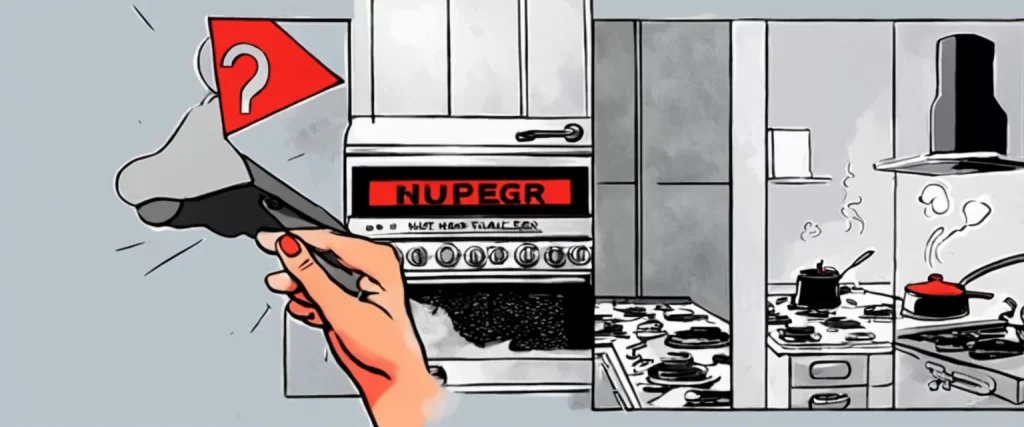—Never Split the Difference & Nudge
In the realm of decision-making and negotiation, two prominent books have emerged as veritable guides for navigating the complexities of human behavior and achieving optimal outcomes. “Never Split the Difference” by Chris Voss and Tahl Raz, and “Nudge” by Richard H. Thaler and Cass Sunstein have garnered widespread acclaim for their insightful perspectives and practical strategies aimed at influencing human choices. While both books delve into the intricacies of decision-making, negotiation, and behavioral economics, they approach the subject matter from distinct angles, providing readers with distinct methodologies to achieve their desired goals.
Never Split the Difference” is a captivating exploration of negotiation tactics, drawing upon the invaluable experiences of Chris Voss, a former FBI hostage negotiator. Voss, alongside Tahl Raz, delves into the art of getting what you want through effective communication and empathetic listening. On the other hand, “Nudge” delves into the field of behavioral economics, where authors Richard H. Thaler (a Nobel laureate economist) and Cass Sunstein (a legal scholar) propose strategies for designing the choice architecture that ultimately influences people’s decisions. By examining these two seminal works, we can gain deeper insights into the intricacies of human behavior and learn how to navigate the numerous variables that influence our decision-making abilities.
The objective of this comparative study is to critically analyze the key principles and strategies proposed in “Never Split the Difference” and “Nudge” in order to understand their unique approaches and their respective impacts on decision-making and negotiation. By exploring the nuances of each book, we aim to shed light on their similarities, differences, and the underlying psychological foundations that serve as the bedrock for their teachings. Moreover, this study seeks to provide readers with a holistic understanding of these influential texts, empowering them to make informed choices and navigate negotiations successfully, whether in personal or professional contexts.
To conduct this comparative study, we will systematically analyze the content of both books, focusing on key themes such as negotiation techniques, effective communication strategies, and the role of behavioral economics in decision-making. By drawing upon relevant research and case studies presented in each book, we aim to demonstrate the practical implications and real-world applications of their teachings. Additionally, we will consider critical responses and reviews of each book to gain a balanced perspective and evaluate their effectiveness in diverse contexts.
By juxtaposing the insights offered by Chris Voss and Tahl Raz in “Never Split the Difference” with the theories put forth by Richard H. Thaler and Cass Sunstein in “Nudge”, this comparative study aims to provide readers with a comprehensive understanding of the key principles and concepts needed to navigate the intricate world of decision-making and negotiation successfully.
Brief Summary of Two Books
Never Split the Difference by Chris Voss,Tahl Raz
“Never Split the Difference” by Chris Voss and Tahl Raz is a book on negotiation strategies, drawing upon Voss’s experience as a former FBI hostage negotiator. The book challenges the conventional wisdom of compromise and instead focuses on the art of negotiation and effective communication. Voss explains various tactics, such as emotional intelligence, active listening, and mirroring, to gain the upper hand in negotiations and achieve win-win outcomes. It also delves into the use of empathy and the importance of understanding the other party’s perspective. Overall, the book offers practical advice and real-life examples for readers to improve their negotiation skills in both personal and professional situations.
Nudge by Richard H
Nudge” by Richard H. Thaler and Cass R. Sunstein is a book about the art of gentle persuasion and how it can be used to improve decision-making and behavior. The authors explore the concept of “nudges,” which are small changes in the way choices are presented that can subtly influence people towards making better decisions without restricting their freedom of choice. The book delves into various real-life examples and studies, showcasing how nudges can be applied in areas such as health, wealth, and education to help individuals and society make better choices and achieve better outcomes. Ultimately, “Nudge” encourages readers to embrace a more thoughtful approach to influencing behavior and designing choices that promote positive change.
Comparison between Two Books

Similarities in persuasion
While “Never Split the Difference” by Chris Voss and Tahl Raz, and “Nudge” by Richard H. Thaler and Cass R. Sunstein focus on different aspects of persuasion, there are some similarities in their approaches.
1. Understanding human behavior: Both books emphasize the importance of understanding human behavior and decision-making processes when attempting to persuade others effectively. Voss and Raz discuss the concept of “tactical empathy,” which means understanding the other person’s perspective and emotions. Thaler and Sunstein elaborate on the biases and heuristics that influence human decision-making, particularly in the context of choice architecture.
2. Leveraging emotions: Both books acknowledge the role of emotions in persuasion. Voss and Raz emphasize the significance of emotional intelligence and empathy for building rapport and negotiating successfully. Thaler and Sunstein suggest that emotions can be strategically influenced through the careful design of choice environments to promote positive decision-making.
3. Active listening: In both books, the authors stress the importance of active listening as a persuasive technique. Voss and Raz describe the power of mirroring and labeling emotions, which helps to create a connection and establish trust. Thaler and Sunstein advocate for active listening to identify people’s preferences and nudging them towards better decisions.
4. Overcoming resistance: Both books provide strategies for overcoming resistance during persuasion attempts. Voss and Raz introduce techniques such as calibrated questions and finding late-stage leverage to address objections effectively. Thaler and Sunstein suggest various forms of nudges, subtle interventions that guide decision-making without infringing on personal freedom, to overcome biases and resistance.
5. Art of negotiation: While “Never Split the Difference” primarily focuses on negotiation techniques, “Nudge” incorporates negotiation skills in the broader context of influencing behavior. Both books provide insights into creating win-win situations and finding mutually beneficial outcomes through effective communication and understanding of the other party.
Overall, “Never Split the Difference” and “Nudge” offer valuable perspectives on persuasion, emphasizing the importance of emotional intelligence, active listening, understanding human behavior, and finding common ground. While Voss and Raz’s book is more applicable to interpersonal negotiations, Thaler and Sunstein’s work focuses on the application of choice architecture in various contexts.
Divergences in persuasion
Both Never Split the Difference by Chris Voss and Nudge by Richard H. Thaler and Cass R. Sunstein are highly regarded books on persuasion and negotiation. However, they diverge in their approach, focus, and techniques.
1. Approach: Never Split the Difference primarily focuses on the art of negotiation, drawing heavily from the author’s personal experiences as a former FBI hostage negotiator. Voss emphasizes the importance of empathy and active listening, while also providing tactical strategies such as establishing a rapport, mirroring, and labeling emotions. On the other hand, Nudge takes a more academic and behavioral economics approach to persuasion. Thaler and Sunstein explore the concept of “nudging” individuals towards making decisions that are in their best interest, using insights from psychology and economics.
2. Human Psychology: While both books acknowledge the importance of understanding human psychology, they differ in their emphasis. Never Split the Difference places a significant focus on emotional intelligence, highlighting the importance of acknowledging and validating emotions for successful negotiation outcomes. Voss advocates for leveraging emotions to create a mutually satisfying solution. In contrast, Nudge delves into the biases and cognitive shortcuts that individuals often fall prey to when making decisions. Thaler and Sunstein suggest that by recognizing these biases, policymakers can design “nudges” that steer individuals towards better choices without restricting their freedom.
3. Tactical Techniques: Never Split the Difference provides a range of negotiation techniques, such as tactical empathy, calibrated questions, and the use of influence triggers. Voss uses real-life examples to demonstrate the effectiveness of these techniques. On the other hand, Nudge focuses more on designing the environment in which decisions are made. Thaler and Sunstein introduce the concept of choice architecture, where subtle changes in the presentation of choices can lead individuals to make different decisions. They propose methods like defaults, feedback, and simplification of choices to nudge people towards better decisions.
4. Scope: While Never Split the Difference primarily focuses on negotiation in high-stakes scenarios, Nudge has a broader scope. Nudge explores how persuasion can be employed in various contexts, ranging from personal decisions to societal issues like healthcare and finance. Thaler and Sunstein stress the significance of governmental and organizational “choice architects” who can design environments that promote positive decision-making.
In conclusion, Never Split the Difference emphasizes the role of empathy, emotional intelligence, and tactical negotiating techniques, primarily based on Chris Voss’s experiences. Nudge, however, adopts a behavioral economics perspective, exploring the biases affecting decision-making and proposing ways to influence individuals’ choices through designing choice architecture. Both books provide valuable insights into the art of persuasion, but from different angles and with different applications.

Conclusion
Both “Never Split the Difference” by Chris Voss and “Nudge” by Richard H. Thaler and Cass R. Sunstein are highly regarded books in their respective fields, but they offer different perspectives and cover different topics.
“Never Split the Difference” is a book about negotiation and communication techniques written by a former FBI hostage negotiator, Chris Voss. It provides actionable strategies and insights from Voss’s experiences in high-stakes negotiations. This book is particularly valuable for individuals interested in improving their negotiation skills, whether in business, personal, or other areas of life.
On the other hand, “Nudge” is a book focused on the field of behavioral economics, written by Nobel laureate Richard H. Thaler and legal scholar Cass R. Sunstein. It explores how small changes and subtle interventions, referred to as “nudges,” can significantly impact people’s behavior and decision-making. “Nudge” is a thought-provoking book that delves into the way individuals make choices and how policymakers can design effective interventions to guide behavior in beneficial ways.
Ultimately, the choice between the two books depends on your personal interests and goals. If you are looking to enhance your negotiation skills and learn practical techniques, “Never Split the Difference” may be more suitable. Alternatively, if you are intrigued by the fascinating realm of behavioral economics and want to explore how subtle nudges can influence decision-making, “Nudge” is an excellent choice.



